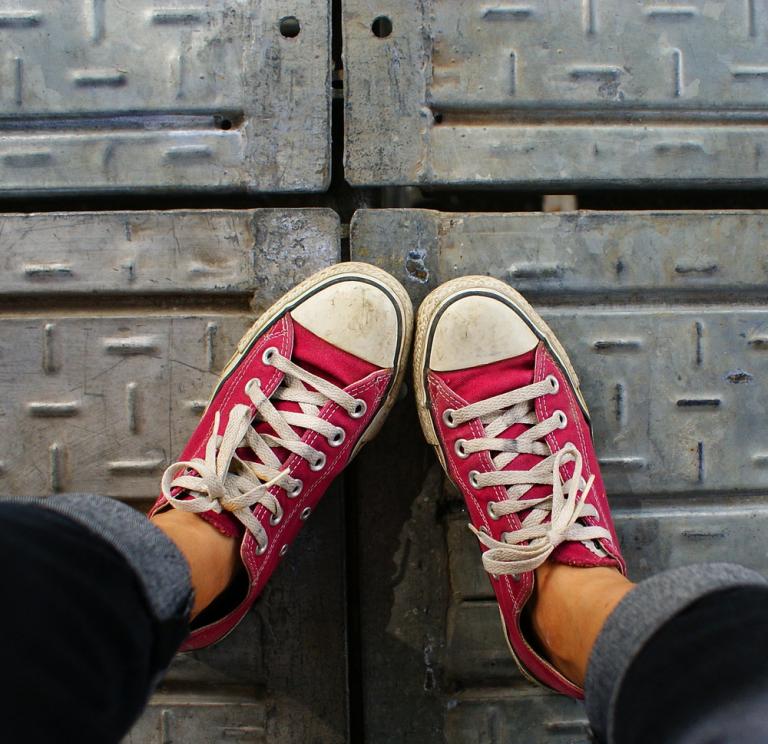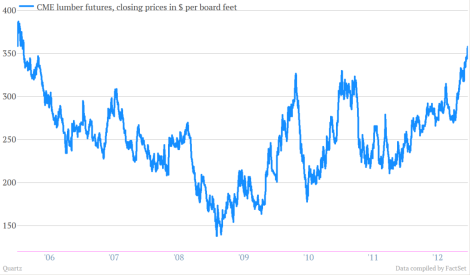Do you like trees? I like trees. Trees are pretty interesting, right? And, if my fourth-grade science teacher is to be believed, they exhale oxygen, which is a nice complement to the way my lungs work. It is with regret, then, that I must inform you that trees are going away. Not all of them. Just 34 million acres of them across the United States.
That figure is the worst-case scenario according to the U.S. Forest Service’s forecast of how expanding residential and industrial areas will combine with climate change to wipe out an enormous amount of forested land.
Some key points (and graphs) from the report, “Future of America’s Forests and Rangelands” [PDF].
- Urban and developed land is expected to increase between 41 and 77 percent by 2060.
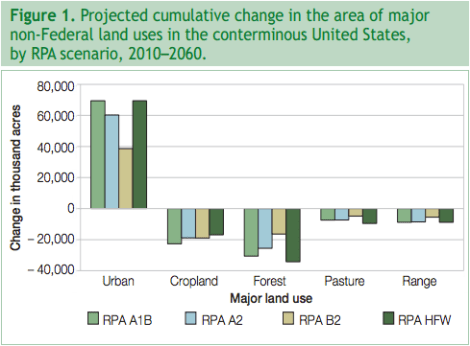
In each chart below, different “RPA” figures indicate different forecasting models.
- Forest losses will range from 16 million to 34 million acres, most severely in the South. The South will lose from 9 million to 21 million acres — 4 to 8 percent of the forest cover it had in 2007.
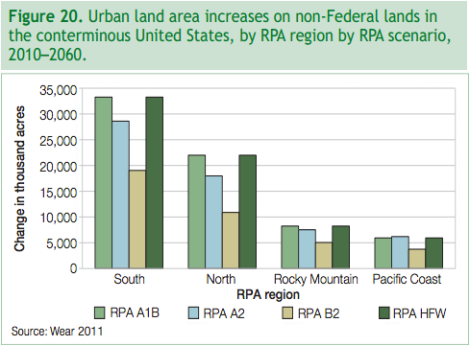
- The peak of forest inventory will be between 2020 and 2030. After that, America’s forests will be a source of carbon dioxide emission due to decomposition, instead of being a source of reduction as trees photosynthesize.
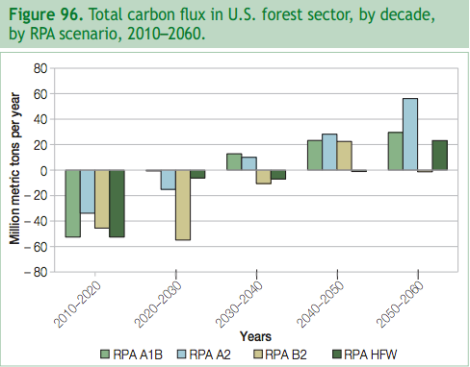
- Complete loss of forest isn’t the only problem; the amount of housing bleeding into forest space will also degrade forest quality. (Which is why, if I may editorialize, we need more bears.)

- Climate change will increase water usage for irrigation and landscaping, resulting in an increase of water withdrawal from natural sources from 2 percent in 2005 to 42 percent by 2060.
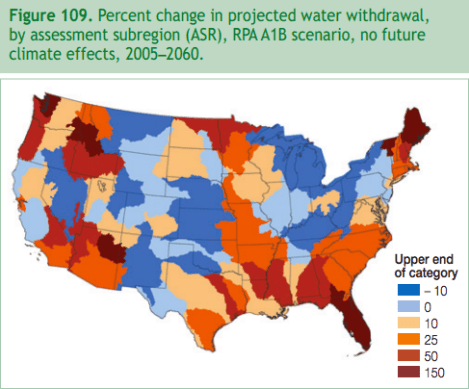
- While we’re at it: Water shortages are going to be a big problem, particularly in the Southwest.
- Climate change also means declines in winter recreation, for obvious reasons.
- Land available for foraging will likely decrease, though timber availability should remain sufficient for demand.
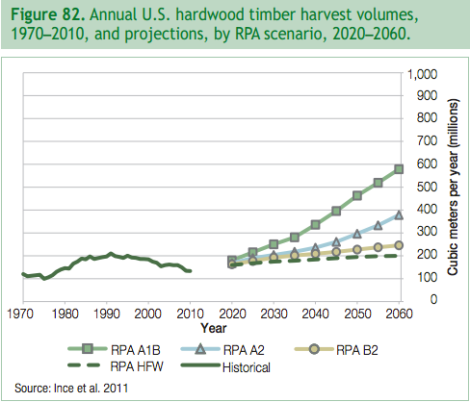
Interestingly, lumber prices have increased 45 percent this year, due partly to the resurgence of the housing market.
More housing means more demand for lumber — and also, over the long-term, less forest area. Though we’ll have enough timber for the near future.
Because why wouldn’t we? Trees will be keeling over right and left. Chop ’em up, sell ’em off.
Sigh. You know what makes a nice gift for the holidays? Shel Silverstein’s The Giving Tree. Maybe get the ebook version.
Hat tip: Brian Merchant.
